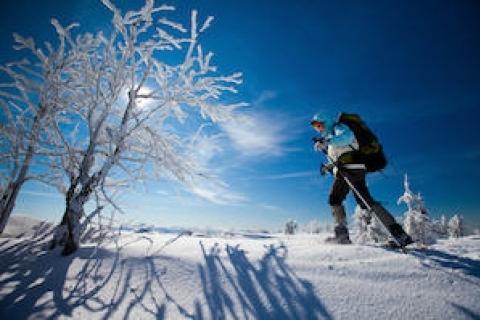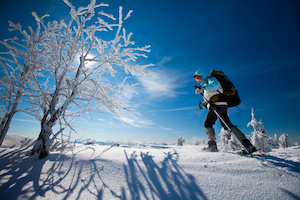
 Hiking in the winter can be an experience without compare. The air is crisp, the atmosphere is serene and the vistas are stunning. There’s little else in the world more peaceful or beautiful than a winter hiking experience.
Hiking in the winter can be an experience without compare. The air is crisp, the atmosphere is serene and the vistas are stunning. There’s little else in the world more peaceful or beautiful than a winter hiking experience.
But just as there are risks that come along with hiking in the summer (dehydration, injuries, etc.), there are also risks that must be taken into account and prepared for when hiking in the winter.
While one can get lost hiking any time of the year, such an occurrence in the winter can be especially dangerous due to such risks as hypothermia and frostbite.
With that in mind, here are some tips to help winter hikers stay on the right track – and what to do in case they do get lost:
How to Prepare Ahead of Time
- Always inform a friend or family member of your hiking plans. Explain where you plan to hike and how long you intend to be gone. This information is invaluable in the case that you get lost and rescuers put a search into effect.
- Study maps of your hiking route, taking note of landmarks and other distinguishing features you may encounter.
- Dress appropriately; doing so will not only keep you comfortable during your hike, but could also help to save life and limb if your plans go awry. Wear synthetic base layers to pull moisture away from your body, topped by an insulating layer of wool or fleece to trap body heat, and finally, a waterproof, windproof outer layer made from GORE-TEX® fabrics to protect you from the elements. Protect your extremities with hat, gloves, socks and waterproof boots.
- Pack key navigation and survival gear, including a map, a compass, a GPS device, a cellphone, food, water, a list of emergency phone numbers, a First Aid Kit, hand warmers, fire starters, and emergency signaling tools like a whistle, flare or signal mirror.
How to Respond if Lost
- Take a deep breath and evaluate your situation. Have you examined your map and attempted to reorient yourself? Are you able to retrace your footsteps in the snow, helping you to get back on the trail? Have you tried calling for help to others who may be hiking nearby? Do you have a cellphone signal and the ability to phone in a request for help? Assess if you’re able to take any of these simple steps, which can be easy to overlook if you become panicked.
- Seek shelter in an area blocked off from the wind and/or snow. Avoid overexerting yourself to build a shelter, however, as this can expend your energy and cause sweating in a way that is more harmful than helpful. In addition, avoid wandering too far to seek shelter, as this may result in your getting even more lost.
- Create warmth by building a fire and wrapping yourself in an emergency blanket. Refuel by drinking water and eating food.
- Attract attention in any way you can. Signal your location to other hikers, passersby or rescuers by using your emergency whistle, flares and/or signaling mirror. Do so at regular intervals.
For more helpful information on camping, hunting, fishing and other outdoor activities, please browse the array of blog posts available on the Bass Pro Shops 1Source website.
- 3482 views

